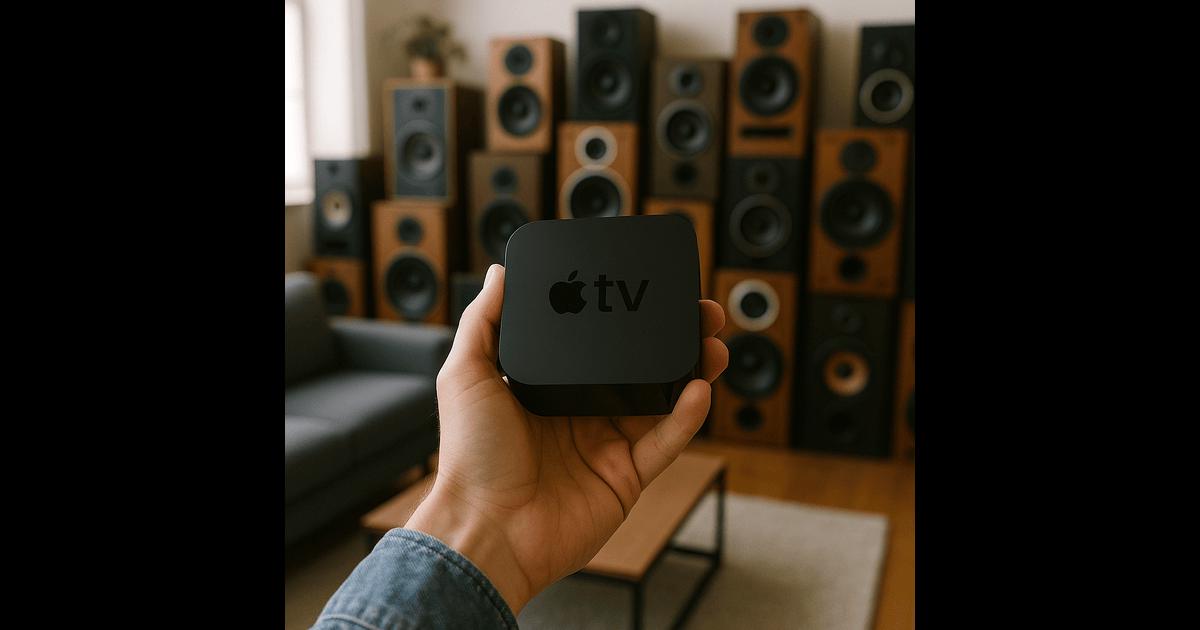Turning your Apple TV into a music hub with AirPlay
Imagine this: your living room. One remote. A screen that glows. And suddenly, music. Not from some dusty speaker hidden behind a couch, but from your Apple TV—elevated, immersive, central. It's not just a streamer of shows anymore. With Apple Music and AirPlay, your Apple TV morphs into something bigger: a music hub. And not just for you—this can be for the whole house.
The Unexpected Power Behind the Apple TV
On paper, the Apple TV might seem like just another device in your tech collection—another square box in a world of screens. But peel back the layers, and there's more than meets the eye. Especially the newer models (like the Apple TV 4K), which come loaded with powerful processors, spatial audio support, and tight ecosystem integration.
Statistically speaking, Apple Music had over 88 million subscribers as of late 2023. And guess what? All of them can take advantage of what we're talking about here. Combine that with the fact that Apple TV usage in U.S. households grew by 20% in the last two years, and suddenly, this whole music hub idea starts to sound... not so fringe.
Step One: Syncing Apple Music on Apple TV
Here’s the setup part. It's not rocket science, but it’s not a single button either. Open the Apple Music app on your Apple TV (yes, it's pre-installed), sign in with your Apple ID, and there it is—your playlists, your library, your algorithmic favorites.
From here, you're the DJ. Or your Apple TV is. Shuffle songs. Loop that one track you swear you'll never get sick of. Browse curated playlists. Let your screen come alive with lyrics (karaoke night, anyone?).
Pro tips? Enable Dolby Atmos for supported tracks. Apple Music supports it, and Apple TV handles it beautifully. Activate VPN for Apple TV to get direct access to a variety of content. The purposes of VPN apps, whether for Apple TV or iPhone, are the same: security, bypassing regional restrictions, and privacy. These arguments should be enough to add a VPN to your list of tools.
Step Two: AirPlay and the Multi-Room Magic
And then comes AirPlay. The unsung hero. The bridge between devices. The invisible thread.
Here's how it works: Let’s say you’re on your iPhone and find the perfect playlist. You tap the AirPlay icon. You see your Apple TV listed. Tap. Done. Music plays on your TV’s speakers—or, if you're fancy, through that epic home theater setup you've got connected to your Apple TV. You can even AirPlay from a Mac, iPad, or even another Apple TV if you’re feeling creative.
Now here’s where it gets spicy. If you’ve got multiple AirPlay 2-compatible devices, you can sync them. Think Apple TV in the living room, a HomePod in the kitchen, and another AirPlay speaker in the bathroom. With a few taps, you create a whole-home audio experience. Volume control per room. Perfect sync. Or not—because sometimes you want your playlists clashing. Chaos can be a vibe.
Use Cases You Probably Didn't Think About
Sure, background music during dinner is great. But let’s go further:
Yoga in the living room? Cue up some binaural beats through your Apple TV.
House party? Guest DJs can AirPlay directly from their phones. No awkward Bluetooth handoffs.
Want ambient noise while working? Search for “Rainforest” or “Cafe Background Sounds” in Apple Music and let your Apple TV carry the vibe.
Family karaoke night? Enable lyrics mode in Apple Music on Apple TV. Boom. Instant karaoke machine.
The more you think about it, the more you realize: your Apple TV’s been underutilized.
Optimize the Setup for Peak Performance
Okay, some quick optimization tips because not all setups are created equal:
Use Ethernet if possible. Less lag, better streaming.
Audio output settings in Apple TV allow you to pick external speakers, AV receivers, or even a HomePod pair.
Apple Music settings let you enable lossless audio and Dolby Atmos—don’t skip this if audio quality matters to you.
Set up automation with the Home app. You can program music to start at specific times or when certain people come home. Spooky? A little. Cool? Absolutely.
The Social Element: Everyone’s a DJ Now
This is where it gets interactive. Guests can connect to your network and queue songs via their own Apple Music accounts (with permission, of course). Playlists can become collaborative. Your home becomes a shared auditory canvas.
Even better? Siri integration. Say “Hey Siri, play my ‘Chill Vibes’ playlist on Apple TV” and she’ll obey. Sometimes. Let’s be honest, she’s moody.
A Few Limitations (Because Nothing’s Perfect)
Yes, there are limitations. Not every speaker supports AirPlay 2. Some older Apple TVs won’t perform as seamlessly. And no, Apple Music doesn’t support Spotify Connect (obviously). But for those deep in the Apple ecosystem, this setup sings. Literally.
Also: beware the neighbors. A proper Apple TV music hub setup gets loud. Gloriously loud.
Final Chord
So here’s the takeaway: If you own an Apple TV, you already have the bones of a powerful, centralized music system. Pair it with Apple Music, sprinkle in some AirPlay finesse, and suddenly your device does more than stream Ted Lasso reruns. It sets moods. It throws parties. It helps you focus. It becomes the pulse of your home.
Not bad for a little black box, huh?
And just remember: while everyone else is still fumbling with cables, you’ll be sipping tea, changing playlists from your wristwatch.

Premium music analytics, unbeatable price: $19.90/month
11M+ artists, 100M+ songs, 19M+ playlists, 6K+ festivals and 100K+ labels on one platform, built for industry professionals.


